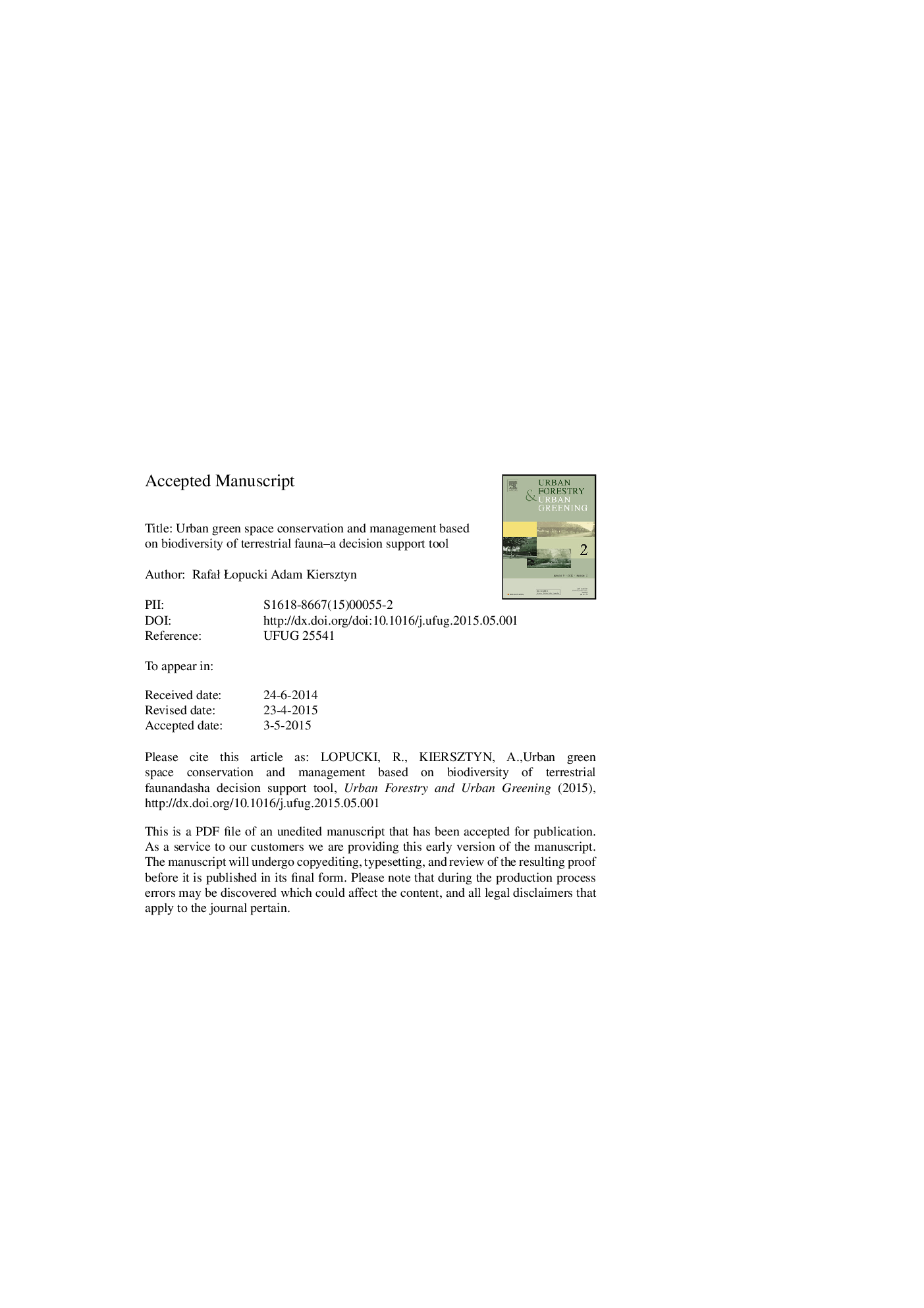| Article ID | Journal | Published Year | Pages | File Type |
|---|---|---|---|---|
| 10252201 | Urban Forestry & Urban Greening | 2015 | 37 Pages |
Abstract
The world is becoming increasingly urban. Tools to support urban planning and management are necessary to reconcile needs to develop buildings, to ensure a high quality of life and to protect urban biodiversity. In this paper, we present a tool based on algorithms of Hellwig's method that can be used in decision-making processes concerning biodiversity management of urban green areas, e.g., identification of ecologically primary areas that should be protected from development, quantitative comparisons of various arrangements of urban green areas and identification of sites that can be built-up with the least loss of urban biodiversity. The tool has been tested with empirical data on species composition and abundance of small mammals in the city of Lublin, Poland (central Europe). We used small mammals as a bioindicators of the ecological significance of green areas. Our scenarios show that this method works well for untransformed species composition and species abundance data. Issues of the universality of the method, its ease of use and low cost, the possibility of use in decision-making process that includes public participation and the credibility of the data and are discussed.
Related Topics
Life Sciences
Agricultural and Biological Sciences
Forestry
Authors
RafaÅ Åopucki, Adam Kiersztyn,
